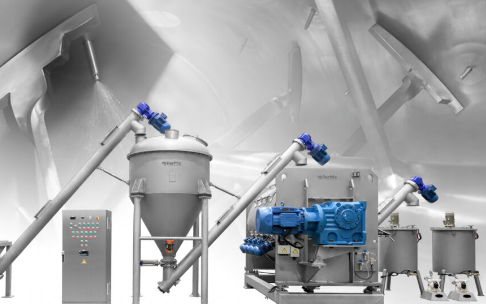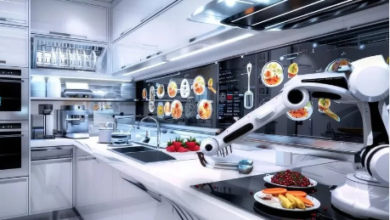How to Choose the Right Paddle Mixer for Industrial Use

In today’s competitive manufacturing landscape, efficiency, consistency, and sustainability are critical factors that determine success. Whether you operate in the food, chemical, or pharmaceutical industry, mixing processes play a vital role in achieving product quality and operational reliability. One of the most versatile and effective types of industrial mixers is the paddle mixer— a solution designed to handle a wide range of materials, from powders to granules and pastes.
Understanding how paddle mixers work, their benefits, and what to consider before choosing one can help you make informed decisions that improve productivity and reduce costs.
What Is a Paddle Mixer?
A paddle mixer is an industrial mixing machine equipped with specially designed paddles that rotate to move materials in a controlled, consistent motion. The paddles lift and fold ingredients, ensuring that every particle is evenly distributed without damaging the material’s structure. This makes paddle mixers ideal for handling fragile materials or products that require gentle but thorough blending.
Industries such as pharmaceuticals, chemicals, and food processing rely heavily on paddle mixers for tasks like coating, conditioning, and homogenizing various ingredients. Their versatility allows manufacturers to handle both dry and wet mixing applications efficiently.
How Paddle Mixers Work
The working principle of a paddle mixer is simple yet highly effective. The paddles are mounted on a horizontal shaft and rotate inside a trough-shaped vessel. As they move, they create a fluidized mixing zone where particles flow freely and mix uniformly.
This action ensures:
Even mixing of ingredients regardless of size or density.
Minimal heat generation, making it suitable for temperature-sensitive materials.
Low shear mixing, preserving the integrity of delicate ingredients.
Energy efficiency, as the paddles require less power than high-shear mixers.
These benefits make paddle mixers a preferred choice across industries that demand precision and consistency.
Benefits of Using Paddle Mixers
Paddle mixers offer a wide range of advantages that contribute to better product quality and more efficient operations:
Uniform Blending: Their unique paddle design ensures even distribution of ingredients, leading to consistent product quality.
Versatility: They can handle powders, granules, pastes, and slurries with ease.
Energy Efficiency: Paddle mixers consume less energy compared to other high-speed mixing systems.
Low Maintenance: The simple design minimizes wear and tear, resulting in longer equipment life.
Customizability: Modern paddle mixers can be engineered to meet specific requirements, such as batch size, material type, and speed control.
Ease of Cleaning: The open design allows for quick and thorough cleaning, essential for industries that adhere to strict hygiene standards.
Applications Across Industries
Paddle mixers are used across a wide spectrum of industries, each benefiting from the technology’s flexibility and precision.
Food Industry: For mixing spices, baking ingredients, powdered milk, and flavor blends.
Chemical Industry: For blending powders, granules, and catalysts in controlled environments.
Pharmaceutical Industry: For producing tablets, capsules, and other formulations requiring exact ingredient proportions.
Construction Materials: For homogenizing dry mortar, cement, and other building materials.
Plastics and Polymers: For evenly dispersing additives and fillers.
In every case, paddle mixers ensure optimal performance and high product quality, which are essential for maintaining industry standards.
Factors to Consider When Choosing a Paddle Mixer
When selecting a paddle mixer for your operations, there are several important factors to consider:
Material Characteristics: The physical properties of your ingredients — including density, moisture content, and particle size — affect the type of paddle design and mixing speed required.
Batch Size and Capacity: Choose a mixer that matches your production volume to avoid inefficiencies or underutilization.
Mixing Uniformity Requirements: For industries that require precision, such as pharmaceuticals, advanced paddle designs can ensure exact blending.
Ease of Cleaning and Maintenance: Hygienic designs and quick-release paddles make cleaning faster and more effective.
Automation and Control Options: Modern paddle mixers can be integrated with programmable logic controllers (PLCs) for better control and repeatability.
Material of Construction: Depending on your application, stainless steel or other corrosion-resistant materials may be required.
Budget and ROI: While cost is always a factor, investing in a high-quality, durable paddle mixer can yield long-term savings and higher productivity.
Why Custom-Engineered Solutions Matter
Every industry has unique mixing challenges. Off-the-shelf mixers may not always meet specific production or material requirements. That’s why custom-engineered paddle mixers are becoming increasingly popular. These solutions are designed to match your exact operational needs, ensuring maximum efficiency and performance.
Manufacturers like PerMix have been at the forefront of this innovation. Their expertise in designing and producing custom mixers allows businesses to benefit from equipment optimized for their materials, environment, and production goals.
Custom engineering enables:
Improved product quality and consistency.
Reduced mixing time and energy consumption.
Enhanced safety and compliance with industry standards.
Adaptability to changing production requirements.
Read Also: Is Solana Price Now Set for a Surge? Here’s What You Should Expect
Sustainability in Industrial Mixing
Sustainability is no longer just a trend — it’s a responsibility. Industrial mixing plays a significant role in reducing energy usage and material waste. Modern paddle mixers are designed to operate efficiently with minimal energy consumption while achieving superior blending results.
Manufacturers are now prioritizing:
Energy-efficient motors to cut down operational costs.
Recyclable materials in construction for lower environmental impact.
Precision mixing to reduce waste and reprocessing.
Automation systems that monitor and optimize energy use.
Companies that invest in sustainable equipment not only enhance their profitability but also demonstrate environmental responsibility, which can strengthen their brand reputation and customer loyalty.
PerMix: A Global Leader in Mixing Solutions
Since 1954, PerMix, a Chicago-based manufacturer of industrial mixers, has been revolutionizing the mixing industry with innovative technologies and customer-centric solutions. Their range of products — including paddle mixers, ribbon blenders, and vacuum mixers — reflects decades of engineering expertise and commitment to quality.
PerMix’s global presence allows them to serve diverse industries, offering reliable and efficient solutions that enhance manufacturing processes. Their paddle mixers are specifically designed to deliver high performance, durability, and ease of use across different industrial applications.
Key highlights of PerMix’s paddle mixers include:
Customizable configurations for unique mixing requirements.
Advanced design for uniform, gentle blending.
Energy-efficient operation.
Compliance with international safety and quality standards.
To explore their full range of mixing equipment and discover the right solution for your business, visit permixmixers.com.







